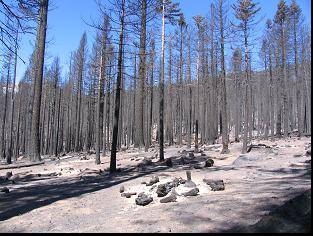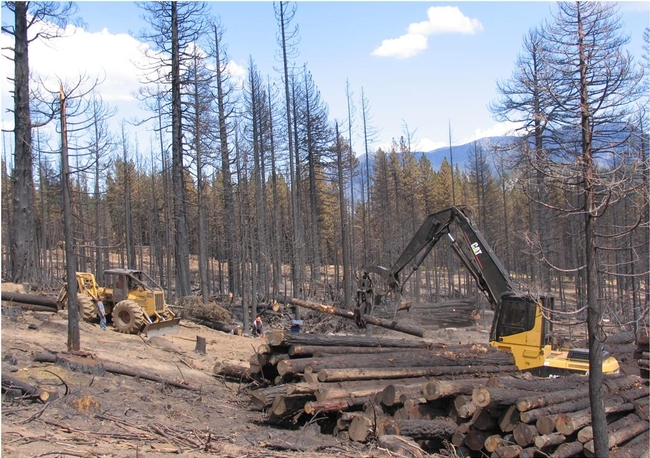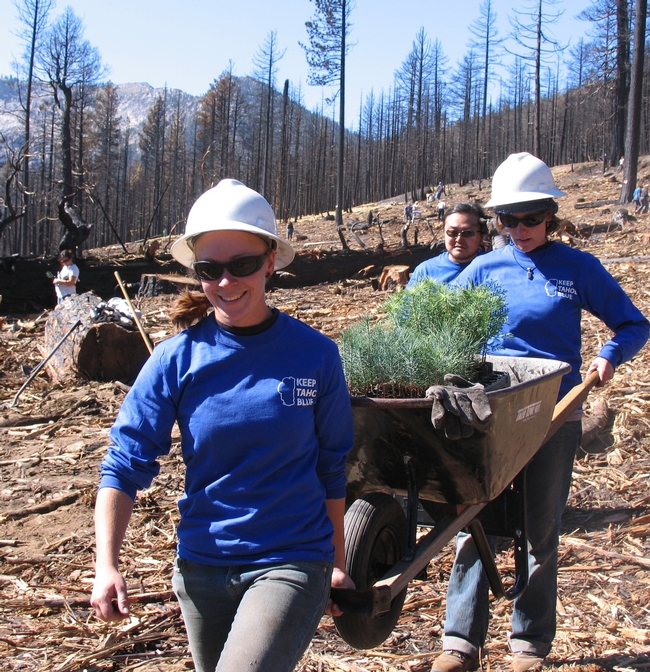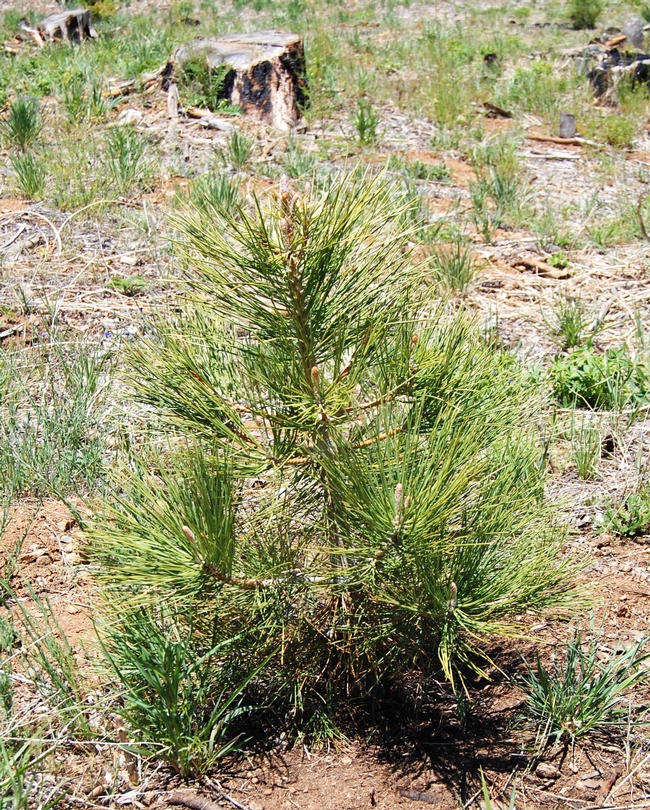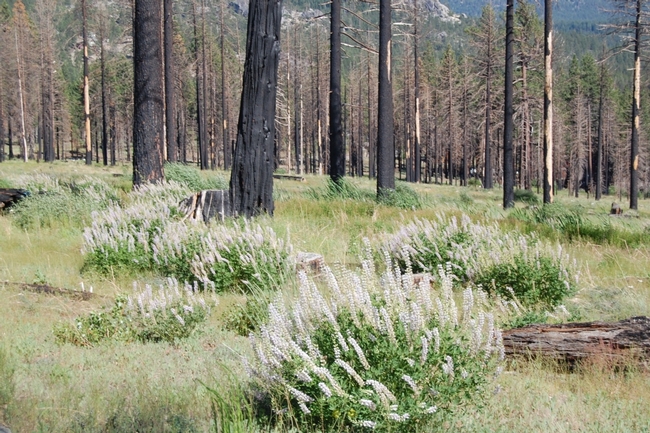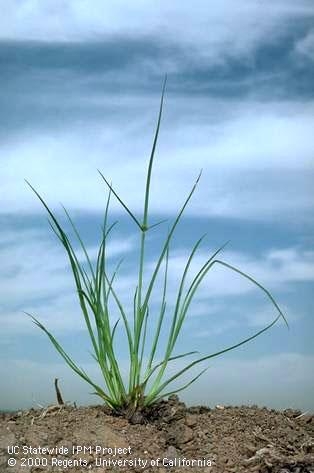UC Blogs
Forest lands may benefit from active restoration after wildfire
In the many forested areas where wildfires are currently burning, the question will soon arise: What should be done after the fire goes out? That depends on the severity of the burn and land owner goals.
For high severity burns where very few or no live trees remain to provide seed for the next generation, forest recovery can take a very long time. Typically forest landowners want to restore their lands to a forested condition as quickly as possible. In that case, an active approach can help them reach their goal sooner.
The California Tahoe Conservancy has just released a report on the outcomes of active restoration of 40 acres of Conservancy lands where all trees were killed by the 2007 Angora fire in South Lake Tahoe. That fire burned 3,100 forested acres as well as 250 homes.
Post-fire Conservancy goals were to re-establish a native forest, reduce hazards posed by dead trees, and avoid water quality impacts. Contractors cut large dead trees, skidded them to a landing, loaded them on a log truck and sent to a nearby mill. Some large dead trees were left on site to provide wildlife habitat. Small trees were ground up (masticated) and left on site to control erosion and suppress competing vegetation. Then one- to two-year-old native conifer seedlings were planted.
The report's authors estimate this active approach has hastened the return to a forested condition in the area by about 60 years. This is because planted seedlings are growing quickly while there are few naturally sprouting tree seedlings in adjacent untreated areas and these face competition from vigorously growing native brush that was stimulated by the wildfire. Soil monitoring showed no compaction by heavy equipment during tree removal and minimal soil erosion. Woody mulch left on site was also effective at suppressing brush to give newly planted tree seedlings a competitive edge.
Landowners looking for guidance on post-fire forest management are encouraged to download the free UC Cooperative Extension publication “Recovering from Wildfire: A Guide for California Landowners” and consult the UC Center for Forest Research and Outreach website at http://ucanr.edu/forestry.
The Girl and the Bubble
Ah, the little intricacies of life... We were walking along a stretch of the coastal town of Bodega Bay when we spotted something we'd never seen...
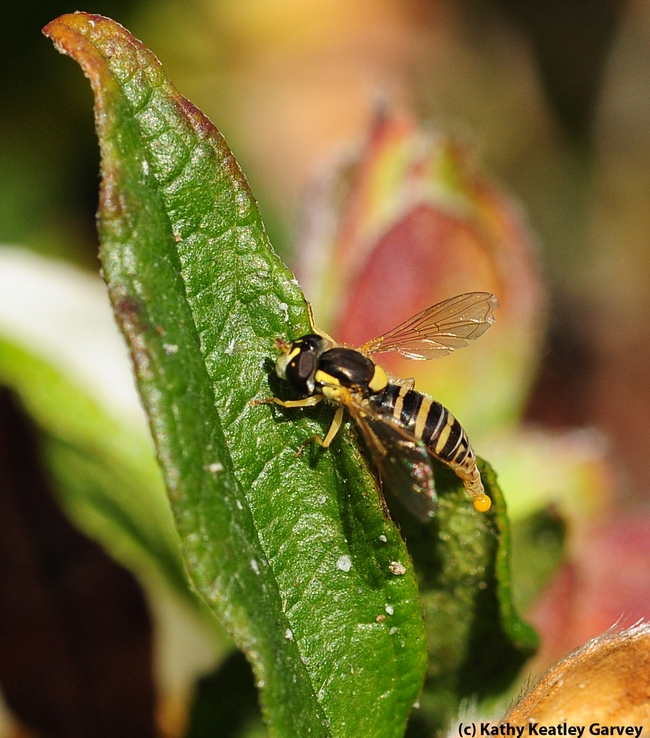
Syrphid fly (female Sphaerophoria), as identified by senior insect biosystematist Martin Hauser of the CDFA. (Photo by Kathy Keatley Gavrey)
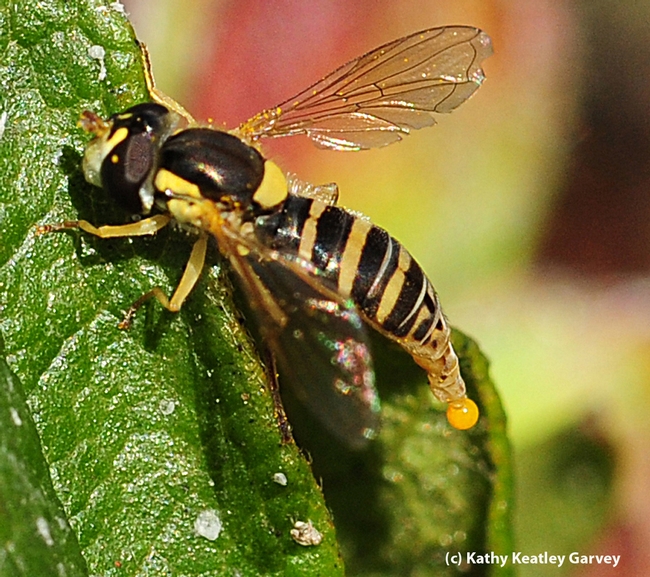
Close-up of "The Girl and the Bubble." See text above for what the bubble is. (Photo by Kathy Keatley Garvey)
UC scientists identify herbicide-resistant sedge
UC scientists have confirmed that populations of smallflower umbrella sedge from rice fields in Sacramento County have become resistant to the widely used contact herbicide propanil, reported Western Farm Press.
Albert Fischer, professor, and James Eckert, staff research associate, both in the Department of Plant Sciences at UC Davis, collected smallflower umbrella sedge seeds from eight fields where resistance was suspected. They grew the weeds in pots, then sprayed them with propinal at half the field rate, the recommended rate and twice the field rate. The herbicide did not control the weed seeds collected at four of the fields. The seeds from the other four fields were well controlled by propinal.
Luis Espino, UC Cooperative Extension advisor, rice, said the field failures with non-resistant sedge could have resulted from mistakes in herbicide application. The propinal-resistant seed were also found to be resistant to several other herbicides.
To prevent weed resistance, Espino said, it is best to alternate modes of action whenever possible.
A Hole for One
During the day, European wool carder bees (so named because the females collect or "card" plant fuzz for their nests) forage on our catmint and...
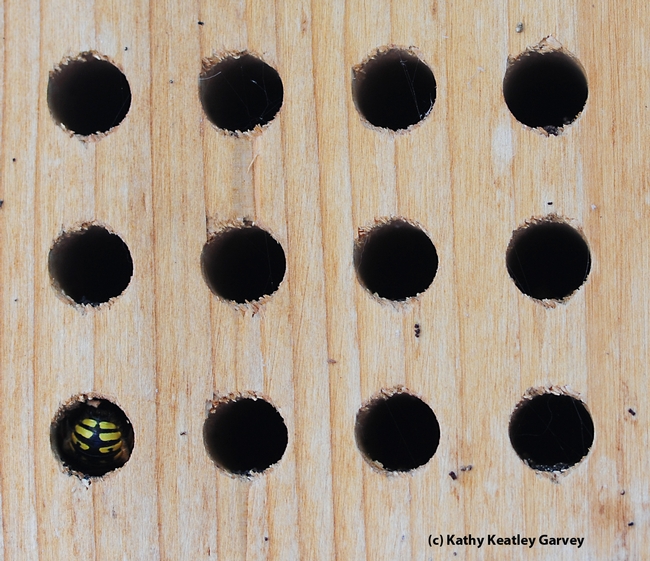
This bee condo, meant for blue orchard bees, is attracting a European wool carder bee, Anthidium manicatum. (Photo by Kathy Keatley Garvey)
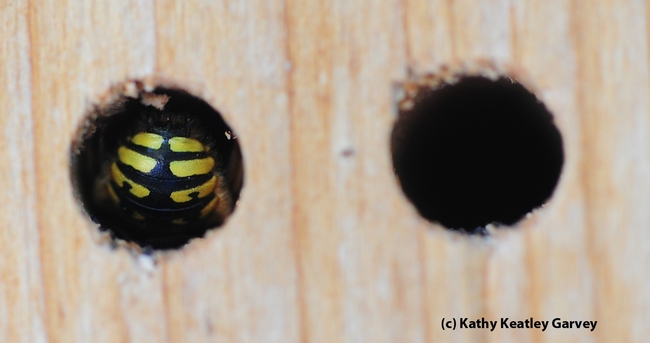
Close-up of a sleeping European wool carder bee, Anthidium manicatum. (Photo by Kathy Keatley Garvey)
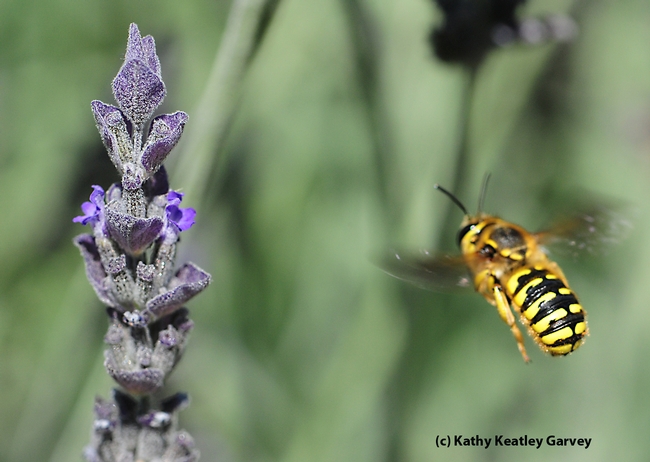
European wool carder bee, Anthidium manicatum, in flight, heading for lavender. (Photo by Kathy Keatley Garvey)
Wild Boar Farms Tomato Tour 2012
This weekend, I had the pleasure of visiting Wild Boar Farms in Suisun Valley. Wild Boar Farms is certified organic by CCOF and their specialty is growing and breeding unusual and tasty varieties of heirloom tomatoes.
The day began with sampling various varieties of tomatoes grown at Wild Boar Farms and melons grown on an adjacent plot leased by Baker Creek Seeds. There was also wine tasting available. Thereafter, the proprietor of Wild Boar Farms, Brad Gates, led attendees on a tour of his farm. Of particular interest, were his research fields where he is experimenting with breeding different varieties of tomatoes, including one containing anthocyanin, a water-soluble pigment which gives blueberries their blue color. In this case, anthocyanin imparts a bluish hue to Brad’s experimental tomatoes (see picture below).
After Brad concluded his tour, Christian Dake of Baker Creek Seeds, led attendees on a tour of the Baker Creek Seeds plot, where he showed us all the varieties of heirloom vegetables (eggplants galore!), melons, and flowers that Baker Creek Seeds intends to showcase at their upcoming Heirloom Expo at the Santa Rosa Fairgrounds, which runs from September 11 to 13, 2012 (see pictures below).
The day concluded with a wonderful lunch prepared by Fume.
For those of you interested in attending this tour, tickets are still available for the following dates, with different events on each date (see www.wildboarfarms.com for complete details):
WHEN: 11:00 a.m. – 2:00 p.m. on Sundays, August 19, 2012, August 26, 2012, and September 9, 2012
COST: $25.00 / person; $10.00 / child 12 & under; Free for Age 6 & under
WHERE: 2252 Morrison Lane, Fairfield
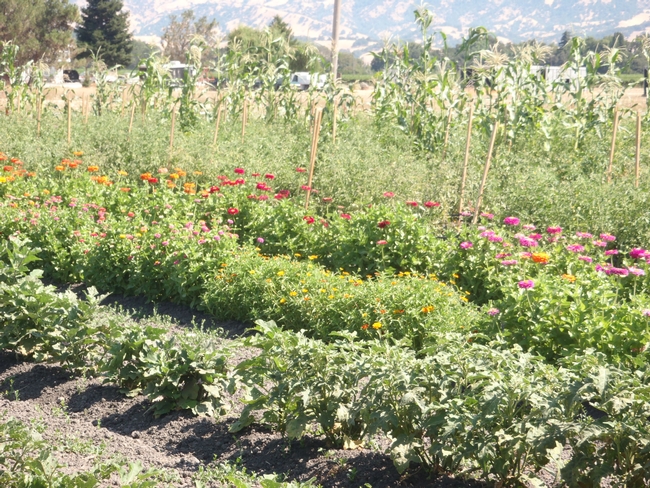
Fields a plenty. (photos by Betty Homer)
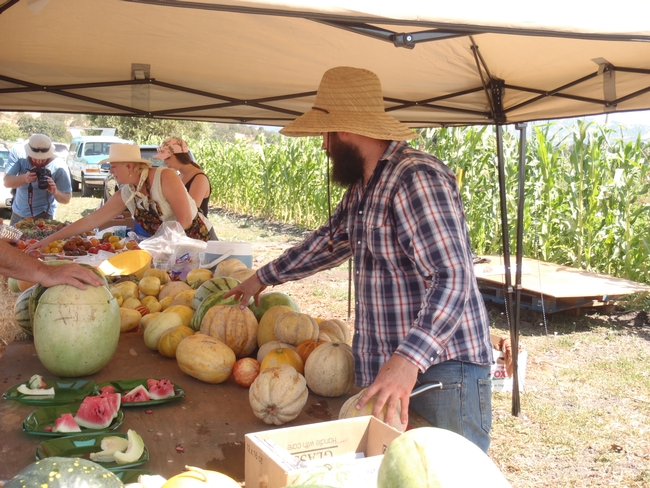
The fruitful bounty.
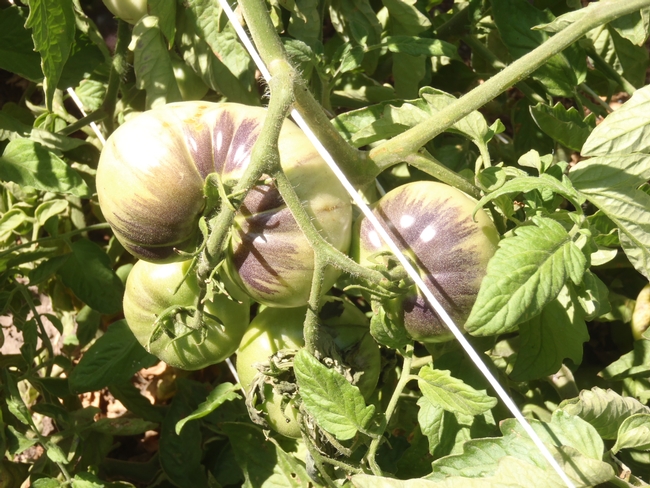
Experimental blue hued tomato.


